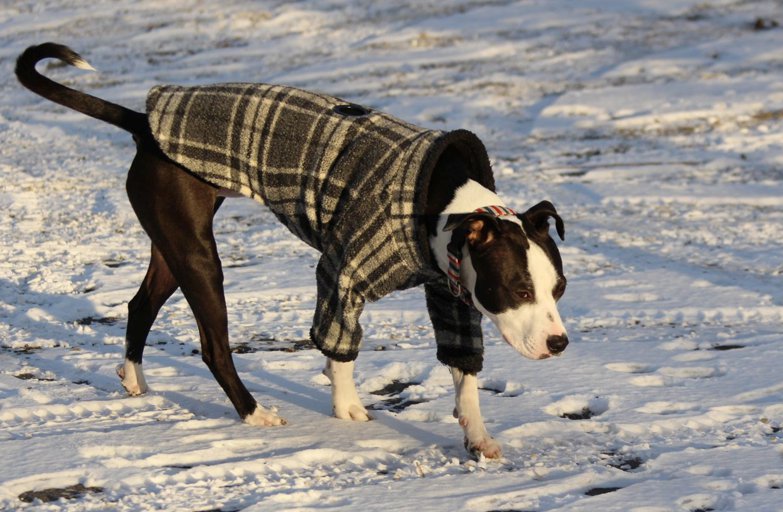FYI: Use the form at the VERY BOTTOM of this page to download our most popular report to help you in starting your business: "The Top 12 Mistakes To Avoid When Starting A Pet Business". The form also allows you to ask us questions and request franchise information. Contact us today!
Thinking of starting a dog business? Then you're in the right place because this informative video will get you started!
I’m John, the founder of the Dogs Love Running! pet care service. We help your pets live longer and behave better through exercise. We’ve been in business for many years and are experts in the dog exercise and pet sitting industry.
The information here is applicable to anyone who wants to start any type of pet business, so send this video to everyone you know who may be interested in getting into this exciting industry.
We’ve tried to keep this video short, but still include all the important groundwork you’d want to know to start your business. But, in case all this still seems like just too much work, you can always join our team as a franchisee because we’ve already done all of this work for you.
After watching this, feel free contact us with any questions you have via the form on this page.
Our video a practical guide to give you a framework from a real business perspective. This isn’t just some basic information on how to make business cards or where put up fliers. You’re going to learn real information on how to develop and grow a real business that can make real money.
With that in mind, let’s get started!
To begin with, a lot of people will tell you that you need a business plan before you start a business. I come from a formal MBA education where business plans are thought of very highly. But my experience has been that you don’t need an entire business plan right this second.
Instead, what you need is an answer to this one question:
What is your absolute end goal in starting your business?
Is it for:
- more money
- more happiness
- more time for yourself
- or another reason?
Many new business owners forget about this question when they begin. But if you can answer this all-important question, you can then work backwards to figure out all the pieces of your business puzzle.
With a very clear answer of what your end goal is, you can then figure out what direction you need to go in your business to get closer to this goal. Every day when you wake up, you need a specific destination in mind so you know if you’re on the right road to get there or not.
Here are some questions to ask to help you figure out your destination:
- will you run the business yourself or hire people?
- how big do you want the business to be?
- how much money do you want or even need to make?
- how many days a week and what hours during the day will you work?
Thinking about and answering these questions before you spend even one penny on your new business will give you an idea of what you need to do today to get to your end goal tomorrow.
So, let’s say that now you know what you want out of your business and you’re prepared to move forward. What next?
Here’s where lots and lots of business owners go wrong. They forget to think about what makes them special. In other words, why would someone buy from you and not your competitor?
- What’s your niche?
- What do you stand for?
- What do you give people that they can’t get anywhere else?
Generally speaking, you can make yourself special by doing one of three things:
- You can be the cheapest, like walmart
- You can have the most incredible customer service/selection, like amazon and zappos
- You can be the most irreplaceable and have the the most unique, innovative, or valuable product/service that a customer can’t easily find somewhere else, like apple computer
Typically, you can only be one of the three. Trying to be all 3 at once just doesn’t work.
Once you know how you’re going to position yourself against your competitors, it’s helpful to have:
- A Mission (that reminds you what your daily goal is)
- A Vision (that reminds you what you long-term big picture goal is)
- Core Values (that remind you and your customers what you stand for and why you’re special)
So now you’ve carved out a little niche for yourself and understand WHY someone might buy from you. Now we have to determine WHAT they’re going to buy.
Exactly, what products and/or services will you be offering?
If you’re a service business, will you do: dog walking, pet sitting, boarding, day care, pooper scooper, pet taxi, house sitting, overnight stays, or something else?
Think about what you like doing.
If getting outside and exercising is up your alley, maybe a dog walking service is right for you. Maybe if you just like cuddling up with pets and hanging out, perhaps specializing in overnight stays is a better option.
Build your business around what you love doing because if you love your job, you’re far more likely to do a great job at it. And your customers will notice that.
Ok, now you know what to sell. And we’re next faced with the thing most people struggle with: Marketing!
How will you let people know about your new business?
The good news is that, for the first time in history, you don’t need a lot of money to beat established competitors. All you need is your brain and some effort. All this is because of the internet. Using the internet can bring you lots of success. And here are the main components of your digital strategy:
- You’ll need a good website. You can start with a WordPress site
- You’ll want some basic pay-per-click advertising knowledge so you know how to use resources like the Google Adwords Program. A great book to get started learning about pay-per-click ads is the Ultimate Guide To Google AdWords
- And you’ll need an understanding of how people search the internet and why it’s important for your website to be able to be “found” just when people are looking for you. Check out Marketing in the Age of Google to read about this subject.
Of course, you also want to meet people in person. That means giving business cards to every dog related business in your area to spread the word. You can’t be in this business without developing solid relationships with your customers, so you need to be out and about to meet them where they can see, hear, and interact with you.
And here’s a tip. forget everything you think you know about traditional advertising methods. That means skip the newspapers, yellowpage ads, radio, and everything else where you pay a lot of money to be seen by people who are NOT actively looking for a service like yours. It's generally not worth your time or money.
So now you know how people are going to hear of you, but what are you going to tell them once they contact you?
Well, there’s lots that people will ask you about, but the one thing everyone wants to know is your price, so let’s touch on that. To determine how much to charge, the best thing to do is to research your competition. Find the highest and lowest prices from your competitors. Once you do that, a lot of people will tell you to go right in the middle and charge the average. But don’t do it. Being in the middle is the kiss of death because it doesn’t give anyone a single reason to buy from you. Instead, you should be at one end or the other. You could be the cheapest because low cost is a good reason why some people may choose you. Or, you could be at the high end, which implies to many people that you’re somehow the best. And being the best is also a good reason why a certain type of person would pick you over your competitors.
You've got your pricing strategy in place and are prepared for people to buy from you. But, what happens if LOTS of people buy from you? What are you going to do?
You’ll have either 2 options:
- do everything by yourself
- add people to your team.
Here are the major pros and cons of both:
If you operate it by yourself: you control everything but your income is limited
If you operate your business with a team: there’s potentially an unlimited income, but you’ll have management responsibilities
Think now about which you’d be interested in doing because if you’re even somewhat successful in your business, you’ll eventually come to a fork in the road where you have to make this choice of hiring people or not.
Price is something that everyone knows to ask about. But the thing all clients want to know but none think to ask is: how do I get in contact with you and when are you available? Generally speaking, the pet business can be a 24/7/365 business. And working every day of the year is a great way to burn out very very quickly. So, think in advance of what days and hours you want to work. Then, tell new clients right at the beginning of your relationship the times you are available to answer their phone calls and emails. If you don’t set boundaries up front, you’ll for sure be getting client requests for additions and cancellations with zero notice and they’ll expect you to be able to deliver. Don’t dig your own hole by doing this.
At this point, you’ve got a solid strategy in place for your new business. Now what do you do?
Now you’ve got to get legal. Starting a business can be tricky, but it’s not too hard if you know what needs to be done.
First, you need to decide on a business form. You could be a sole proprietor, corporation, or partnership, among other possibilities.
To get a good overview of the types of business structures you can choose from as well as to actually file the forms you need to submit to your local government agencies, you can check with a certified public accountant. Many can probably be found in your local area. You can also check out a service like Legal Zoom. There’s lots of information at Legal Zoom on the business structures you can choose from and the pros and cons of each. Plus, getting a business set up through them is relatively inexpensive. It’s generally only a few hundred dollars.
Once the business is set up, you need to get insurance before you make ANY pet visits. Don’t wait to get insurance until after you’ve got a few clients. That’s like saying you’ll get home insurance only after you’ve lived there a few months and know you like it. The problem with that is that if anything happens before you obtain the insurance, you can be in serious financial and legal trouble.
Here are 3 places you can find insurance:
You’ve now got a formal business set up, you’ve got insurance, and now you just need an agreement to give to customers for them to sign so that you’ve got proof of what they agreed to.
There’s lots of legal mumbo jumbo you can put in this agreement, but basically what you need to start is :
- who the agreement is between: you and the customer
- what you’re doing for the customer
- how much you’re charging
- business policies such as: payment requirements, insurance informaiton, cancellation fees, etc
In addition to the service agreement, you’ll also need to document the pet’s health and what exactly the client is asking you to do during the visit. You want to provide the best service possible and asking them very specifically what they want done make things crystal clear from the outset.
Finally, you’ll want a veterinary release that gives you permission (or not) to get the pet some emergency medical attention in case you can’t get in immediate contact with the owner.
Finally, all your strategic plans are in place and you’re ready to really start your business. The next steps for you are to:
- Get your website up and running. This is crucial because this is the key way in which people are going to learn about you.
- Make sure you’ve got a WORKING phone number and email for people to contact you.
- Get some business cards or other materials to give to people and to local pet businesses that can refer customers to you.
- Start doing some internet marketing with PPC ads
- Go out and meet people.
I know there’s lots of information here. In fact, the Dogs Love Running! franchise training program takes multiple days to cover all this information and more, so it’s really hard to cram it into such a short video. However, this really is the complete foundation for all you need to know to get in business for yourself.
If you’re looking to get started in any type of pet business, feel free to contact us. We’d love to help. And if you’re interested in a dog walking and running or pet sitting type opportunity, why don’t you consider joining up with us as a franchisee. We’re pretty sure we can save you thousands of dollars and hundreds of hours of work over trying to reinvent the wheel yourself. But, of course, there’s absolutely no obligation to hear about our franchise opportunity. We just love this business and we’re happy to help anyone get into this industry that wants to. We hope to hear from you.
Thanks for watching and give us a call!









